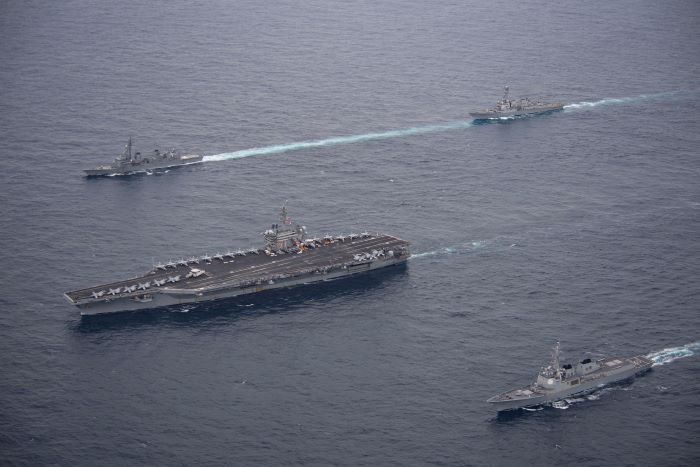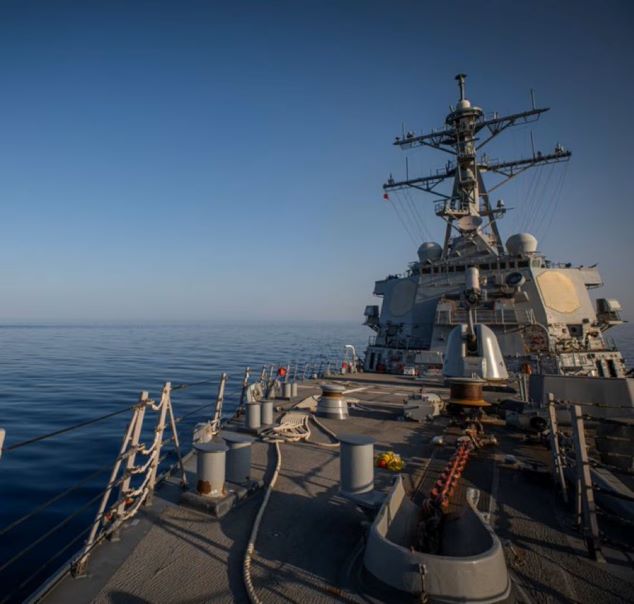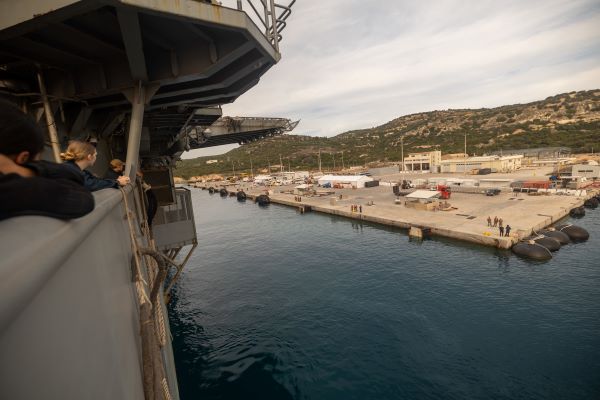The U.S. Navy, Japan Maritime Self-Defense Force (JMSDF) and Republic of Korea Navy (ROKN), conducted a trilateral maritime exercise, reaffirming their commitment to bolstering regional security and stability in the Indo-Pacific on April 11-12.
Participating ships include aircraft carrier USS Theodore Roosevelt, Arleigh Burke-class guided missile destroyers USS Russell (DDG 59), USS Daniel Inouye (DDG 118), and USS Howard (DDG 83); Murasame-class destroyer JS Ariake (DD-109) of the JMSDF; Sejong the Great-class guided missile destroyer ROKS Seoae Ryu Seong-ryong (DDG 993) of the ROKN.
During the 2-day event, the three maritime forces sailed together, conducted advanced maritime communication operations, maritime interdiction operations training, air warfare exercises, staff exchanges and integration. The allied forces last trained together in January 2024.
“Trilateral exercises such as this demonstrate our ability to integrate and operate with our allies. Together, the U.S. Navy, ROK, and JMSDF are ready to respond to any contingency,” said Rear Adm. Christopher Alexander, commander, CSG-9. “We are all committed to shared maritime security and a free and open Indo-Pacific.”
The U.S. Navy regularly conducts exercises like these to strengthen ties among allied and partner countries.
“This exercise was a great opportunity to increase our abilities to respond to DPRK’s advancing nuclear and WMD threats and to provide humanitarian support to ships in distress through close cooperation between the participating forces of the three nations.” said Captain Baek Jun-cheol, Commanding Officer of ROKS Seoae Ryu Seong-ryong.
In August 2023, at the Camp David Summit, the three nations agreed to multi-domain trilateral exercises on a regular basis to enhance our coordinated capabilities and cooperation, a commitment to pursuing enhanced ballistic missile defense cooperation to counter DPRK nuclear and missile threats and deepening our security partnership. These exercises also enhance combined readiness and capabilities and support peace and stability in the region. The event was conducted in accordance with international law in international waters.
“Through this trilateral exercise, we were able to strengthen our cooperation with the U.S. Navy and ROK Navy. The exercise also promoted cooperation among the three countries to address security challenges in the Indo-Pacific region, and demonstrated the three countries’ commitment to safeguarding common security and prosperity as well as maintaining a rule-based international order,” said Commander, Escort Division 5, Capt. GOTO Masahiro.
This year marks over 70 years of U.S partnership with the Republic of Korea marked by their Mutual Defense Treaty of 1953, as well as the U.S. partnership with Japan since the 1951 Security Treaty between the U.S. and Japan.
“Everything we do is about maintaining deterrence and ensuring that seas remain free and open.” said Capt. Brian Shrum. “All of this is achieved through cooperation and the strength of our combined allied forces.”
CSG-9 departed San Diego for a regularly scheduled deployment to the Western Pacific, Jan. 12. Since entering U.S. 7th Fleet area of operations, the strike group participated in Multi-Large Deck Event with the Carl Vinson Strike Group and JMSDF and conducted port calls in Guam and the Republic of Singapore.
CSG-9 is a multiplatform team of ships and aircraft, capable of carrying out a wide variety of missions around the globe from combat missions to humanitarian assistance and disaster relief response. The strike group is comprised of CSG-9 staff, Destroyer Squadron (DESRON) 23 staff, USS Theodore Roosevelt (CVN) 71, Carrier Air Wing (CVW) 11, and DESRON 23 ships; Arleigh Burke-class guided-missile destroyers USS Russell (DDG 59) and USS Daniel K. Inouye (DDG118).



